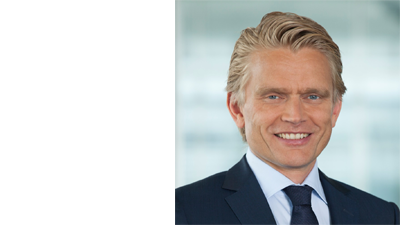{{item.title}}
{{item.text}}

{{item.text}}
The TV Subscriptions/Licences market consists of revenues generated by distributors of TV content. It includes spending on subscriptions to basic and premium channels accessed via cable, telephone utilities, over-the-top (OTT) providers and other distributors. Swiss public TV licence fees and royalties for audio-visual works are also included.
Video-on-demand (VoD), pay-per-view (PPV) and separately paid TV programmes delivered via the Internet (OTT) or by TV providers are included only in the Filmed Entertainment segment. Mobile TV subscription spending is no longer reported here because it is increasingly obsolete as a standalone revenue stream (revenues are included in the IPTV segment).
Earlier this year, Facebook announced a new entertainment platform for watching television in VR. Then Oculus TV was introduced and is set to change the VR experience of the future. The latter is a dedicated hub for viewing flat-screen video (non-VR video included) in virtual reality. The service features a virtual home theatre with a gigantic TV screen (equivalent to a 180-inch TV screen) on which it is possible to access different streaming video services like SVOD platforms, free web-TV providers and content from Facebook. The social feature of Oculus TV enables people to share the VR experience with one or even multiple friends, who can join viewing sessions in the virtual home theatre and themselves connect with friends and family all across the planet. With Internet access and a VR headset, people can gather in a virtual world to enjoy their favourite series or share common memories by watching a self-made Facebook video.
Currently, VR TV is closely tied to the interface of gaming. VR takes a step in the right direction by allowing people to connect in a virtual world, in a more interactive way and regardless of their location. Nonetheless, the technology has to improve its video quality and hardware further in order to generate a persuasive user experience and thereby achieve mass adoption.
In March 2018, Swiss citizens were called to vote on the abundance of mandatory licence fees for public radio and television. The related initiative was rejected by more than 70% of the voters. As a result, the government retains the right to impose taxes for public television and radio. The Swiss Broadcasting Corporation (SRG) announced the reduction of mandatory fees from CHF 451 to CHF 365 per year, which will now be applicable for every Swiss household in the form of a general tax, starting in 2019.
As of 2019, the SRG will receive a maximum tax share of CHF 1.2 billion per year. Apart from inflation indexation, this amount will remain unchanged. The collective allotment to private radio and television stations entitled to a share of the tax will be increased from the current CHF 67.5 million to CHF 81 million. This corresponds to 6% of the total income from radio and television licence fees and thus to the maximum percentage pursuant to the Radio and Television Act (RTVG). The SRG has announced cost-cutting measures of up to CHF 100 million in response the reduced fees, the capping of revenues and declining advertising income.
As of January 2019, the mandatory licence fees for public radio and television will then be levied by Serafe AG, which was awarded the mandate by the Federal Department of the Environment, Transport, Energy and Communications, following a public tender procedure in 2017. A new law on electronic media is also being drawn up with the intent to enable online media to contribute to and promote public media services along with the traditional radio and television providers.
Revenues generated from TV subscribers amounted to CHF 2.2 billion in 2018. Due to an adjustment in the survey methodology, there is no longer a differentiation made between the IPTV and digital cable categories in this study. The TV Subscription segment should experience slower growth (CAGR of 0.7%) in the next five years due to increasing market saturation.
Swisscom was able to underscore its position as market leader in 2017 with a 3.5% gain in new subscribers and a larger market share of 36.2 per cent, whilst UPC intensified the battle for rights to broadcast a range of major sport leagues and events. UPC’s MySports bought the rights to televise the Swiss Ice Hockey League and the German Bundesliga. At the beginning of the year, the related growth in new customers was still low. These rights acquisitions are perceived as a long-term investment within the company. Nonetheless, in the second quarter of 2018, the company lost just under 54,000 RGUs (revenue generating units).
Rather new to the market is Sunrise, which once again managed to gain a firmer foothold in the market by winning 50 thousand new subscribers, which corresponds to a growth rate of over 30 per cent. Sunrise now holds around 5.3 per cent of the market.
Switzerland is one of the most fragmented TV markets in Western Europe. This, in combination with the rising popularity of OTT platforms and the reduction underway in classic TV consumption, impacts the Web-TV providers. In 2017, all the main Web-TV providers recorded a decrease in individual customers, mainly due to the lack of major live sport events. This year, there has also been a decline in unique users for Web-TV providers with the exception of Zattoo, which benefitted from the Olympic Games and the World Cup (a new viewing record was set with 1.9 million people watching the Swiss national football team’s opening match). Other market players recorded a slower decline than the previous year, but are starting to feel the harsh market competition.
“The Swiss entertainment market will experience a peak of fragmentation within the next two years as consumers increasingly look for a more convenient solution. Companies must then be able to make a differentiation through original content, user experience and pricing.”
OTT gains in popularity
After the market entrance of Netflix and Amazon’s My Prime, other market players have followed in an increasingly intense battle for the customer’s leisure time. Major international OTT platforms are menacing national content providers with their enormous spending power and wide array of available content. Netflix and Amazon are continuously winning new customers as their content expands and improves. Netflix is still by far the predominant OTT platform in Switzerland: one out in five Swiss citizens uses this subscription model. Following the entrance of Sky Sports and DAZN in the sports market in 2017, Sky Show launched at the beginning of 2018 to provide further entertainment content aside from its OTT sports offering.
Growth through Bundle deals
Bundled offers at low rates with fixed network flat rates, ultra-fast Internet up to 10 Gbit/s, replay TV, VoD including innovative additional services such as unlimited recording, live pausing and multiroom reception on multiple devices, are all considered crucial for the success of a telecom company. Last year, Swisscom introduced inOne, a quadruple-play bundle. Nine months after its introduction, already 1.3 million customers with 2.7 million access points have opted for this new bundle deal, thereby increasing the company’s bundle-related revenues by 13.4% to CHF 2.837 billion. UPC’s triple-play bundle, Connect & Play, was replaced by the new Happy Home offering at the beginning of 2018, resulting in an overall increase of 10,000 RGUs. Salt entered the Swiss fixed-network market in early 2018 with the Fiber Box, a triple play offer based on ultra-fast broadband fibre optics.
New TV user experiences through data-driven analytics
Improved data analytics results in major benefits for TV consumers. The greatest value to pay-TV providers comes from key aspects like churn reduction, customer service, personalisation and targeted advertising. Leading-edge technologies in this area enhance content discovery and recommendation engines. Moreover, significant benefit is to be gained by integrating linear and on-demand content as well as unified search and voice control to create great user experience.
“We’ll break limits of traditional TV through the immense expansion of content variety and new services. The future entertainment offering will be a personalised mix of live TV, replay, VoD and online content like YouTube clips.”
Sports continue to be the key battleground
In 2017, the main focal point for broadcasters and content providers in Switzerland was once again the access to sport rights. Whilst UPC invested large amounts into the rights for the Swiss ice hockey league, Teleclub secured the rights to broadcast the Swiss Super League. At a price tag of CHF 35.4 million, UPC almost doubled the amount previously paid for a Swiss ice hockey league season. With this investment, UPC broke Teleclub’s monopoly in the Swiss sports sector, following a multi-year bidding war. What’s more, UPC is not willing to share the entire MySports signal with Swisscom. This has led to an even more fragmented TV environment and underscores the importance of sport rights as a key differentiation factor in the Swiss TV subscription market. Despite its investments in MySports and the ostensible content differentiation, UPC lost customers in the past 12 months.
Meanwhile, the old whole-in-one package is no longer available to customers, who now have to pay for multiple sports bundles with different broadcasters and over-the-top streaming platforms in order to access a complete sports offering.
“Linear television will continue to play an important role, especially in the transmission of live (sport) events. However, OTT platforms will dominate the mobile market. “
Swiss sport content distributors:
| Swisscom (Teleclub, Sky) |
UPC (MySports, Sky) |
Sunrise (Teleclub, Sky) |
SRG SSR | Sky (OTT) | DAZN (OTT) |
|
| Swiss ice hockey | No | Yes | No | Yes (Playoffs) – 1 game per game day | No | No |
| Swiss Super League | Yes | No | No | Yes (1 game per game day) - undisclosed |
No | No |
| Champions League | Yes (121 of 137 exclusive on Teleclub) | No | Yes | Yes (1 game per game day) - undisclosed | Yes | No |
| Premier League | Yes (1 game per week – French commentary) | No | No | No | No | Yes |
| Bundesliga | Yes (only games on Friday) | Yes | Yes | No | Yes | No |
| La Liga | No | No | No | No | No | Yes |
| Serie A | Yes (undisclosed) | No | No | No | No | No |
| Ligue 1 | Yes (undisclosed) | No |
No |
No |
No |
No |
| Motor Sports | Yes (undisclosed) | Yes | No | Yes (Swiss participation) - undisclosed | Yes | No |
NBA |
No | Yes – via “Sport 1 US” | No | No | No | Yes |
| NHL | Yes (4 games per week – one game per playoff day – all finals games) | Yes (undisclosed) | No | No | No | No |
NFL |
No | No |
No | No |
No | Yes |
The TV subscription and licence fees market is expected to experience more moderate growth rates over the next five years than previously assumed. Through 2022, the total market is projected to grow at a CAGR of 0.4%. TV subscription revenues are still going to expand, but at a slower annual growth rate of 0.7%, mainly due the saturated Swiss TV subscription market. Within the next two years, the Swiss TV market will experience a peak in fragmentation. By 2021, TV subscription revenues will amount to some CHF 2.3 billion.
License fees on the other hand are declining. Because of the new general tax for public license fees starting in 2019, less income will be generated from license fees. Royalties should grow at a CAGR of 5.4% through 2022 but will remain a rather marginal component of the TV subscription and license fees market.
The Western European market will experience only moderate growth over the next five years with a CAGR of 0.9%. Due to the many mature markets in the region as well as an advanced Internet video sector, organic growth will be increasingly difficult for pay-TV providers.
In contrast to the overall Western European market, the Swiss market is looking at a CAGR of 0.4% and generally slower growth. This deceleration will be mainly due to reduced income from the general tax for TV and radio licence fees as well as declining revenues from TV subscriptions.
Germany will remain the largest market, followed by the UK and France. Germany, as opposed to the other two countries, will further expand its market over the next five years. France will only grow through TV license fees, and the British market can actually be expected to decline.
{{item.text}}

{{item.text}}

Bogdan Sutter
Director Advisory, Strategy und Transformation Expert, PwC Switzerland
Tel: +41 79 356 30 80



